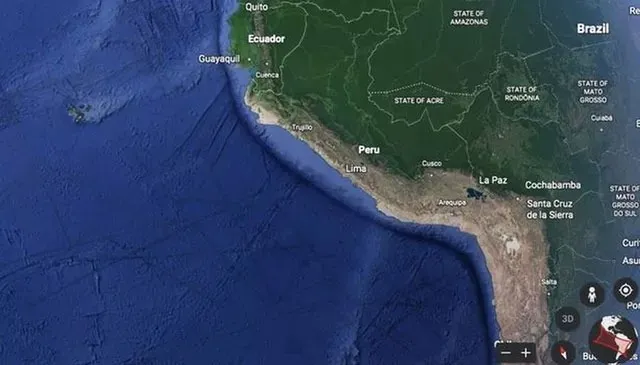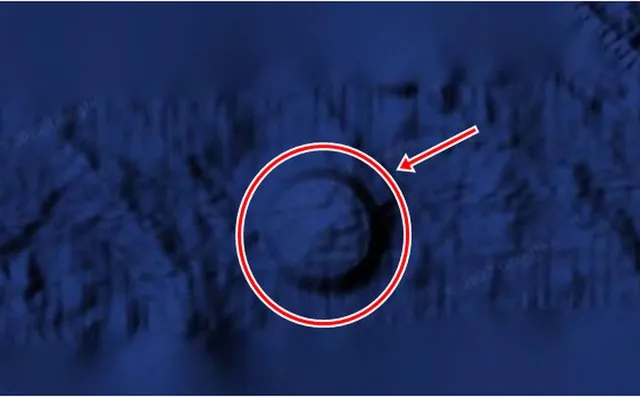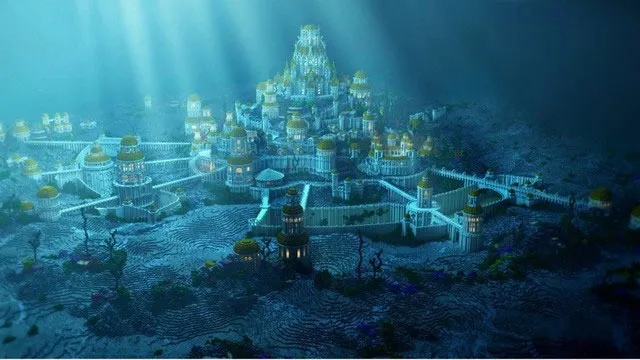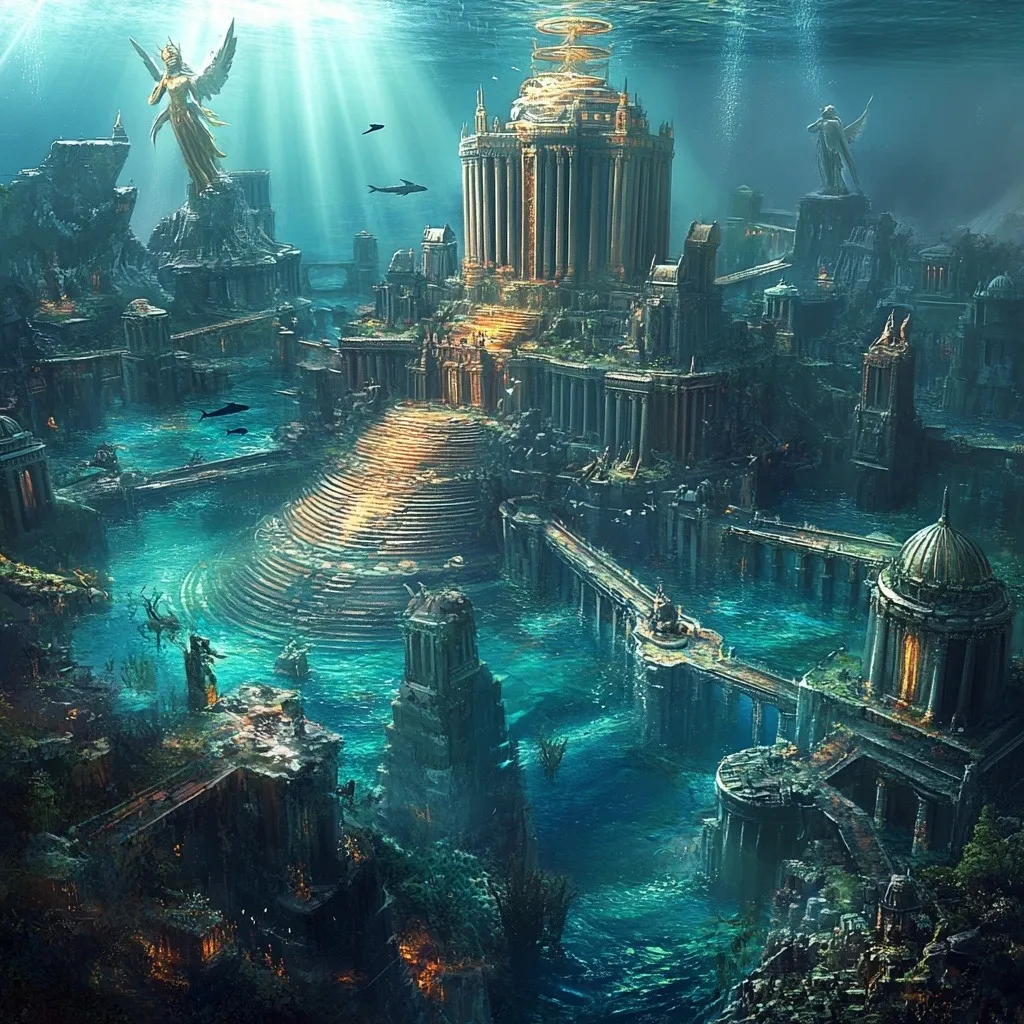An 8-Kilometer Ocean Find: Remnants of a Submerged City?
A Civilization Lost Overnight: The Mystery of Atlantis
Was Evidence of Atlantis Discovered?

According to Daily Star, Scott C. Waring, a UFO researcher, recently discovered a mysterious object measuring 5 miles (over 8 kilometers) in length beneath the ocean floor using Google Earth. Waring claimed that the structure and shape of the object closely resembled the lost city of Atlantis.
Waring shared images of this mysterious object on his blog, describing it as a perfectly round structure. He stated that the object is located near the Nazca Desert in Peru, a site famous for the enormous geoglyphs known as the Nazca Lines.
Strange Symbols and a Dome-Like Structure Beneath the Ocean

The mysterious symbols and dome-like circular structure have led Waring to suspect it could be Atlantis.

The location of the object is near the Nazca Desert in Peru.
The Nazca Lines consist of shallow incisions in the ground that expose differently colored sediment layers, creating patterns that include large depictions of animals. These lines were first discovered from above in 1939 when a pilot accidentally flew over the area. Initially buried under layers of sand, the lines were revealed after strong winds blew away the covering soil.
Scientists estimate that the Nazca Lines were created between 200 BCE and 600 CE. Spanning over 80 kilometers, the Nazca Lines were designated as a UNESCO World Heritage Site in 1994. However, archaeologists remain puzzled about why the Nazca people created these massive drawings.
Waring believes that the Nazca Lines are connected to the mysterious object he found beneath the ocean, which he claims is also linked to the disappearance of the fabled city of Atlantis.
Atlantis: A City Described by Plato Over 2,300 Years Ago

The story of Atlantis originates from the Greek philosopher Plato (circa 424–328 BCE). According to National Geographic, Plato introduced Atlantis in his works Timaeus and Critias. In these dialogues, he presented a comprehensive view of the world, describing a universe composed of the four elements—earth, air, fire, and water—interacting to form all existence. Atlantis was a central topic in these discussions.
Plato described Atlantis as a vast island that existed 9,000 years before his time. According to the story, Critias’ grandfather heard about Atlantis from the wise Solon, who had learned of it during his travels to Egypt.
Atlantis was said to be under the protection of Poseidon, the Greek god of the sea. Plato’s descriptions depict the island as larger than Libya and Asia Minor (modern-day Turkey) combined, situated in the Atlantic Ocean beyond the “Pillars of Hercules” (now known as the Strait of Gibraltar).
The Legend of Atlantis

According to Plato, Poseidon traveled the world in search of the largest island, eventually discovering Atlantis, home to the most beautiful and intelligent people. He fell in love with a mortal woman, Cleito, and to protect her, Poseidon isolated the city on a hill surrounded by water, naming it Atlantis.
Cleito’s home in Atlantis was encircled by five rings of water connected by tunnels containing docks for ships. A grand canal linked the outermost ring to the ocean. All access routes to the city were fortified with gates and towers. The walls, constructed from red, white, and black stone, were adorned with precious metals.
Cleito bore Poseidon ten sons, including the firstborn Atlas, who inherited the city and became its first ruler. They built a grand temple for their father, featuring a giant golden statue of Poseidon riding a chariot pulled by winged horses, housed in a spiraling temple that reached the heavens.
Atlantis was described as an advanced civilization, thriving under ideal conditions of climate and geography. Its military was exceptionally powerful, particularly at sea, and conquered vast territories. In Africa, Atlantis’ forces extended as far as Egypt, while in Europe, they reached Tyrrhenia (modern central Italy).
The Catastrophic End of Atlantis

However, the glory of Atlantis was short-lived. In 9600 BCE, a devastating flood and massive earthquakes submerged the island into the ocean overnight, wiping out its civilization entirely. The sudden disappearance of such a vast empire has left countless questions unanswered.
Theories About the Legendary City Beneath the Ocean

The tale of a powerful empire suddenly collapsing and vanishing seems implausible, giving rise to numerous theories from experts worldwide.
One of the most convincing theories about Atlantis’ existence comes from ocean explorer Robert Ballard. He found parallels between Plato’s account and the volcanic eruption on the island of Santorini in the Aegean Sea near Greece.
Around 4,000 years ago, the Minoan civilization thrived on Santorini. The Minoans shared striking similarities with the inhabitants of Atlantis as described by Plato. They were highly advanced and existed around the same time as the alleged Atlantis.

However, a volcanic eruption obliterated the Minoan civilization. Today, Santorini is a popular tourist destination in Greece. Whether it is Atlantis or not remains uncertain.
In 1970, another bizarre theory emerged. Renowned American linguist Charles Berlitz, famous for his books on paranormal phenomena, suggested that Atlantis was swallowed by the Bermuda Triangle. Situated in the Atlantic Ocean, the Bermuda Triangle is notorious for the mysterious disappearances of ships and aircraft.
Berlitz theorized that the Bermuda Triangle might have engulfed Atlantis. However, the Bermuda Triangle is far from the Strait of Gibraltar, where Plato placed Atlantis, leading scientists to dismiss Berlitz’s hypothesis. Nonetheless, conspiracy theorists continue to believe in this idea.
For thousands of years, humanity has been captivated by the enigmatic story of Atlantis. Whether it was a real civilization or merely a figment of Plato’s imagination, the philosopher succeeded in creating a legendary tale that continues to fascinate people to this day.
Is this the trace of Atlantis? A massive 8-kilometer circular object, discovered by Scott C. Waring near the Nazca Desert, has reignited theories about the lost city described by Plato. Could this discovery link the enigmatic Nazca Lines to the legendary civilization destroyed overnight by cataclysms? While some draw parallels to Santorini or even the Bermuda Triangle, others see it as an elaborate myth. Could this be the key to solving the age-old mystery or just another underwater enigma?






